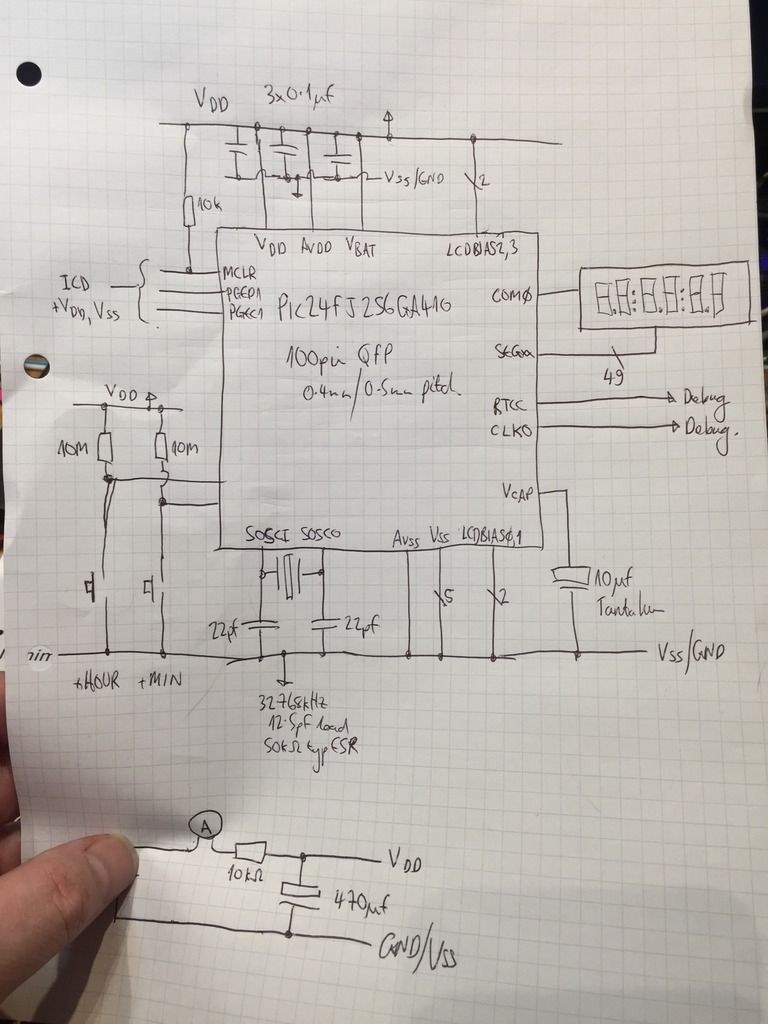Edit 15 Jan 2022: see also updated sub microwatt version here:
https://www.eevblog.com/forum/projects/ultra-low-power-mcu-design-the-nanowatt-clock/https://youtu.be/yyoR0o5YBVIAim: make a useful microcontroller project that will work in under 1uA aggregate current, to be powered by one or two of those tritium/solar cells that Nurd Rage built.
Result: An LCD clock is close, it worked, but not quite sub 1uA. Despite a lot of work, 1.8uA was the best I managed, so about 100+ years on a pair of AAs if they didn't self discharge and leak all over the place beforehand.
It's based on PIC24FJ256GA410 Nanowatt XLP processor. i couldn't achieve one or two of the datasheet delta current specs by some way, particularly the low voltage sleep current by an order of magnitude (60nA spec'd, 550nA achieved), others weren't spec'd or occasionally I achieved better.
What I learned...
O Don't trust all datasheet and marketing specs;
O Prototype everything first (I knew this already, this just reinforces it);
O Clean your boards or your current measurements are shit with ultra low power stuff;
O Closely follow crystal specs and layout for ultra low power oscillators;
O Measure high dynamic range very low duty cycle aggregate current, and it's not the uCurrent (at least not on its own).
O Remove your debugging/programming tool when taking current measurements.
Non-junk box parts:
o Microchip PIC24FJ256GA410-I/PT Farnell ref 2493343
o Abracon ABS25-32.768KHZ-T Farnell ref 1611824
o LCD Clover Display 5042PHR
www.rs-online.com ref 184-7737


Oscillator startup times from cold power up, VDD yellow, 8MHz FRC green, 32.768kHz crystal oscillator blue. Note that I modified the code to output the SOSC on a buffered REFO pin as probing the SOSC low power oscillator crystal directly is extremely difficult to do without stopping the oscillator. Even spring grounded techniques with Tek 3.9pF/10Mohm load passive probes, or 0.6pF/0.3pF single ended/differential 100kohm FET browser probes stopped the oscillator.

The low power secondary oscillator is very picky about crystals, 0402 22pF loading caps and parasitics, so I soldered them directly on the breakout board and isolated the two SOSC pins from the breadboard by cutting the tracks. There is a ground adjacent to one of the SOSC pins where both the caps terminate. The device's pitch here is 0.4mm to give a sense of scale. Not sure if the obligatory cat hair has any beneficial effect. I know it's not one of mine, I'm bald as a coot.

